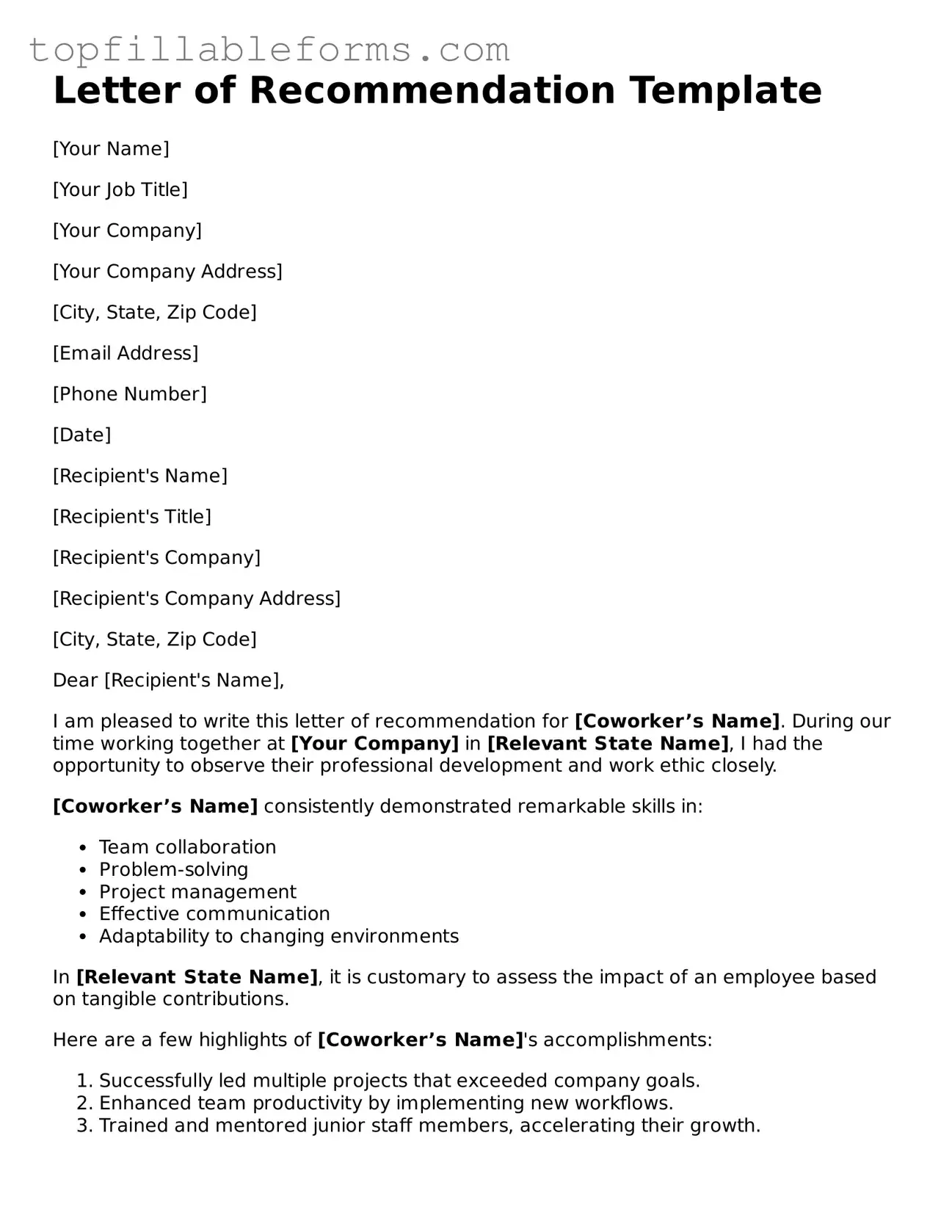Letter of Recommendation Template
[Your Name]
[Your Job Title]
[Your Company]
[Your Company Address]
[City, State, Zip Code]
[Email Address]
[Phone Number]
[Date]
[Recipient's Name]
[Recipient's Title]
[Recipient's Company]
[Recipient's Company Address]
[City, State, Zip Code]
Dear [Recipient's Name],
I am pleased to write this letter of recommendation for [Coworker’s Name]. During our time working together at [Your Company] in [Relevant State Name], I had the opportunity to observe their professional development and work ethic closely.
[Coworker’s Name] consistently demonstrated remarkable skills in:
- Team collaboration
- Problem-solving
- Project management
- Effective communication
- Adaptability to changing environments
In [Relevant State Name], it is customary to assess the impact of an employee based on tangible contributions.
Here are a few highlights of [Coworker’s Name]'s accomplishments:
- Successfully led multiple projects that exceeded company goals.
- Enhanced team productivity by implementing new workflows.
- Trained and mentored junior staff members, accelerating their growth.
With unwavering commitment, [Coworker’s Name] has proven to be not just a valuable employee but also a supportive colleague. I believe they will bring these same qualities to your team.
Thank you for considering this recommendation. Please feel free to reach out for any further information.
Sincerely,
[Your Name]
[Your Job Title]
[Your Company]
